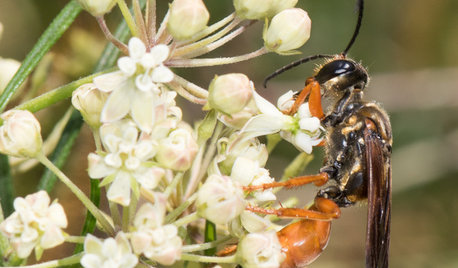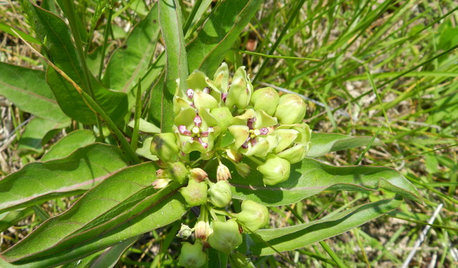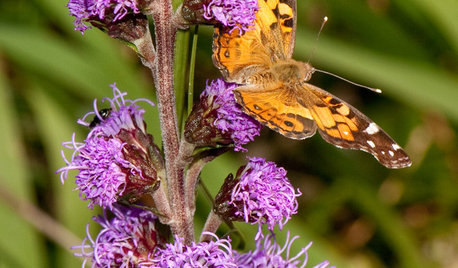Lisa, I have a monarch caterpillar ?
OklaMoni
11 years ago
Related Stories

FLOWERS AND PLANTSHelp Monarchs and Other Butterflies by Planting Common Milkweed
Summer-blooming Asclepias syriaca is an important larval host plant for the monarch butterfly and attracts a number of pollinating insects
Full Story
GARDENING FOR BUTTERFLIESBe a Butterfly Savior — Garden for the Monarchs
Keep hope, beauty and kindness alive in the landscape by providing a refuge for these threatened enchanters
Full Story
FALL GARDENINGWhat Monarch Butterflies Taught Me About Garden Design
Thinking like a butterfly leads to fresh perspectives in the garden and in life
Full Story
CALIFORNIA NATIVE PLANTSGreat Design Plant: Asclepias Is Attractive to Monarch Butterflies
Increase monarch butterfly populations in California by planting stunning native milkweeds
Full Story
GARDENING GUIDESHow I Learned to Be an Imperfect Gardener
Letting go can lead to a deeper level of gardening and a richer relationship with the landscape. Here's how one nature lover did it
Full Story
GARDENING GUIDESGreat Design Plant: Asclepias Incarnata for a Butterfly Garden
Beautiful swamp milkweed makes it easy to help monarchs and other pollinators in eastern U.S. gardens
Full Story
GARDENING GUIDESGreat Design Plant: Asclepias Verticillata
Plant whorled milkweed in dry central and eastern U.S. gardens to attract monarch butterflies and other insect pollinators
Full Story
GARDENING GUIDESGreat Design Plant: Asclepias Viridis
Green antelopehorn is a milkweed that is short, drought-tolerant, not aggressive and a monarch favorite
Full Story
GARDENING GUIDESAmerican Lady Butterflies Add Delight to Summer Gardens
Provide native nectar and larval host plants to welcome these migratory butterflies
Full Story
GARDENING FOR BUTTERFLIES7 Native Wildflowers to Make You an Awesome Butterfly Host
Offer the leaves of these and you’ll get more butterflies than with flower nectar alone
Full StoryMore Discussions






Lisa_H OK
susanlynne48
Related Professionals
Allen Landscape Architects & Landscape Designers · Taylorsville Landscape Architects & Landscape Designers · Hartford Landscape Contractors · Beverly Hills Landscape Contractors · Bristol Landscape Contractors · Brooklyn Park Landscape Contractors · Cudahy Landscape Contractors · Dallas Landscape Contractors · Medford Landscape Contractors · Nashua Landscape Contractors · San Carlos Park Landscape Contractors · Secaucus Landscape Contractors · Castle Rock Decks, Patios & Outdoor Enclosures · Houston Decks, Patios & Outdoor Enclosures · Portland Decks, Patios & Outdoor EnclosuresOkiedawn OK Zone 7
Lisa_H OK
Okiedawn OK Zone 7
susanlynne48
Okiedawn OK Zone 7
susanlynne48
Okiedawn OK Zone 7
OklaMoniOriginal Author